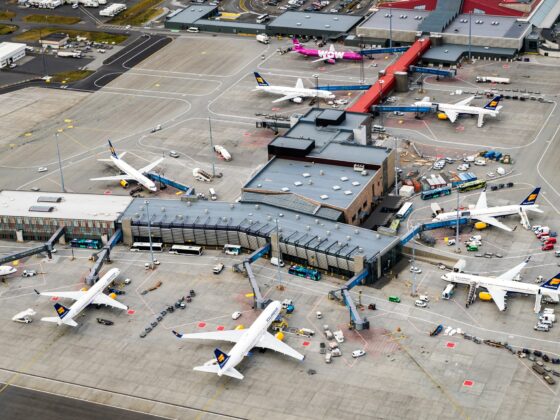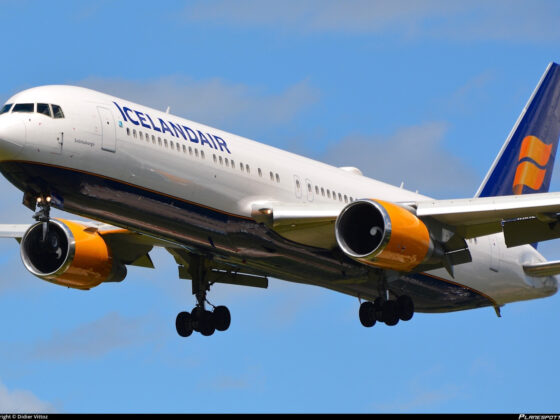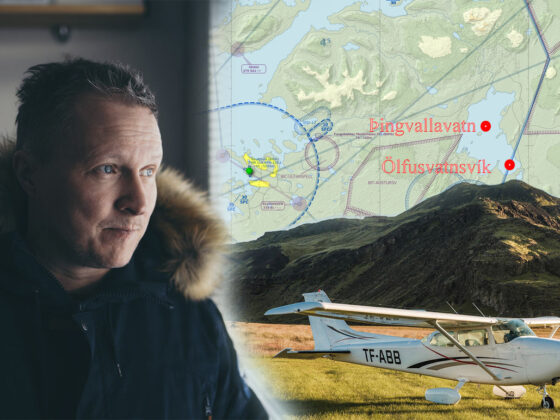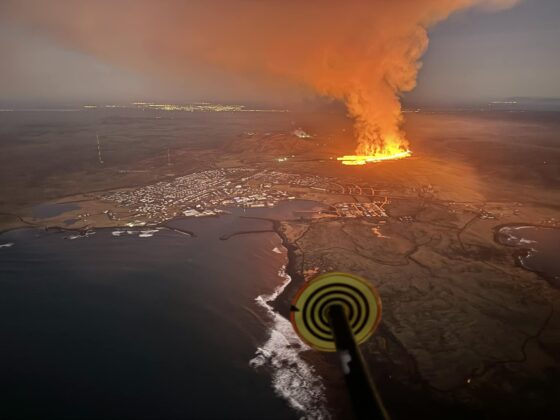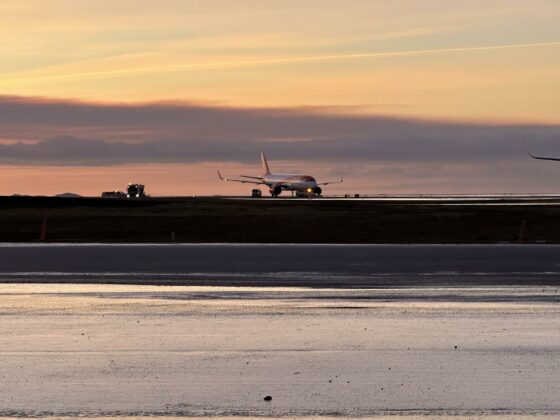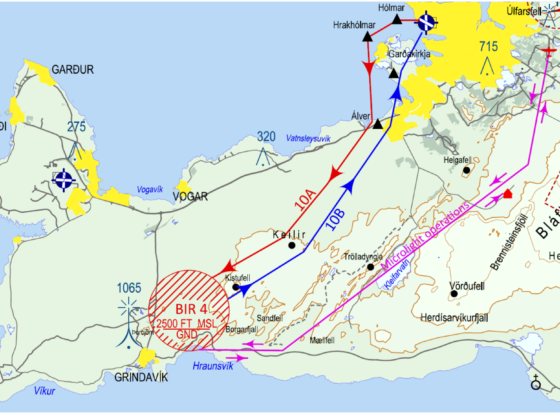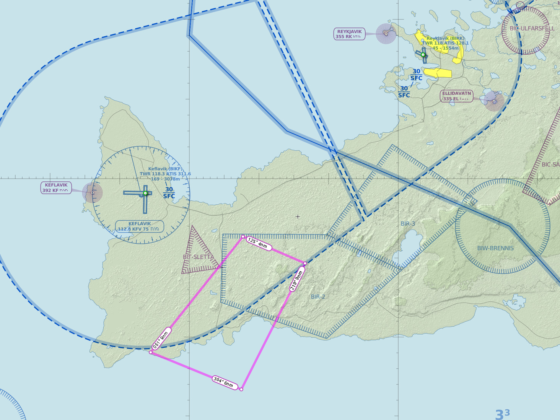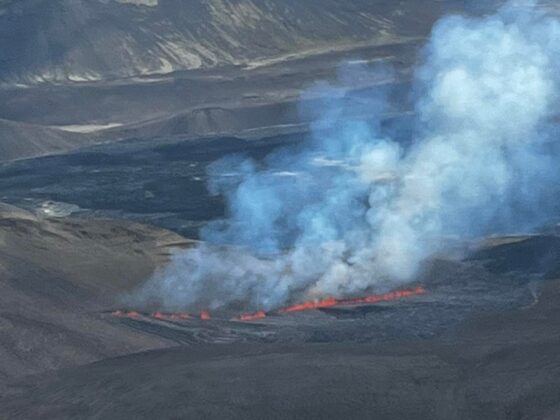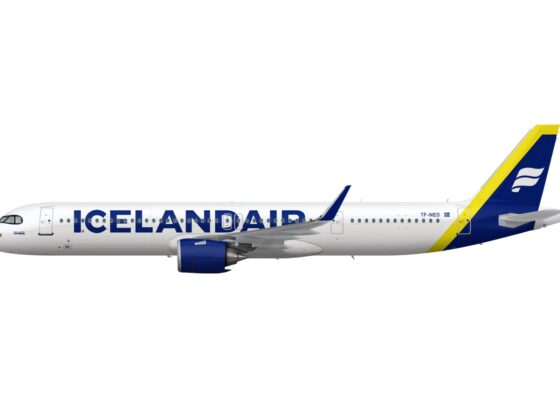RNSA (ITSB) found the cause of the accident with Icelandair Boeing 757-200 reg. TF-FIA, which had happened in Keflavik airport 7 of February 2020, says the preliminary report of the investigation agency, published today. According to the report, aircraft’s right main landing gear collapsed during landing due to failure of swivel attachment to the main strut.
Aircraft TF-FIA was returning to Keflavik Airport as flight FI529 from Tegel airport, Berlin. The two last METAR during the event indicated the weather in Keflavik was as follows: wind 40-42 knots with gusts 53-56 knots, visibility 5000-6000 meters, drizzle and light rain.
The Commander briefed his intentions to land a bit further down the runway than normal (3 white and 1 red on the PAPI), to avoid turbulence on short final. The plane intercepted the localizer and the ILS was followed down towards RWY 10. The airplane encountered considerable turbulence at 1000 feet above MSL. The autopilot was disengaged between 600 and 700 feet above MSL and the airplane was then manually flown down towards the runway.
“The flare was normal and the airplane initially touched down on its right main landing gear. Then the left main landing gear touched the runway. Almost immediately thereafter, as the nose was gradually coming down, abnormal sound [like metal fracturing] was observed and the right side of the airplane sunk down. The airplane speedbrake deployed momenteraly and the right engine hit the runway. The airplane then leveled off again and the nose landing gear touched the runway”, says the report.
According to the report, the first touchdown with right main landing gear was with 1,28G load max peak, followed by left main landing gear touchdown and spoilers deploy.

The airplane wobbled as it continued down the runway, on the left main landing gear and the nose landing gear only, as the PF fought to keep the airplane level and centred on the runway, utilizing the aileron and rudder controls. As the airplane speed decreased, the aerodynamics of the wings and the effectiveness of the rudder and aileron control diminished, until the PF could no longer keep the airplane wings level. The right-wing sunk down again and the right engine hit the runway again. The airplane skid on the runway until it came to stop, still on the runway but with a magnetic heading of 115°.
During the ITSB on-site investigation, it became clear that the nut used to fasten the swivel in the lug position on the main landing gear shock strut was missing along with its mating washer-splined. Visual inspection of the swivel revealed only minor damage in one location of the threads. Visual inspection of the nut revealed only two minor damaged areas on the nut threads, 180° apart and across the threads, most likely caused by the sheared off head and threaded end section of the shank as the nut came off the swivel. This suggests that the nut came off the sviwel without the nut turning. This also suggests that the thread sizes of the swivel and the nut did not match.
Initial measurements by the ITSB after the accident has shown the Major Diameter of the swivel threads to be 1.622 inches. For 1/8 inch undersize, the Minor Diameter of the nut was required to be in the range of 1.5439 to 1.5539 inch. Initial measurements by the ITSB after the accident has shown the Minor Diameter of the nut threads to be 1.617 inches. The preliminary investigation, therefore, indicates the nut to be too large for the 1/8 inch undersized swivel threads.

RNSA recommended to perform check for aircraft that have received overhauled landing gears from Landing Gear Technologies, registered as TF-ISS, TF-FIA, TF-ISY and D4-CCG in Icelandair and Cabo Verde Airlines.
“If the landing gear overhaul records indicate that the parts have been undersized by Landing Gear Technologies, jack up the airplane per the Aircraft Maintenance Manual instructions, disassemble the undersized parts and measure the threaded portion of the undersized parts to verify that their sizes are mating and per the relevant Component Mainteanance Manual (CMM) for undersize parts”, says the RNSA report.


